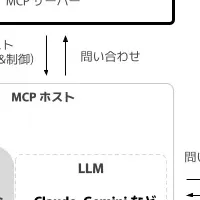
Global Workforce Management Software Market Expected to Grow by USD 3.08 Billion from 2024 to 2028
Global Workforce Management Software Market Growth
The global market for workforce management software is poised for a substantial increase, with projections indicating a growth of approximately USD 3.08 billion from 2024 to 2028. According to a report by Technavio, this surge will reflect an estimated compound annual growth rate (CAGR) of 7.66% during the forecast period.
Market Segmentation
The workforce management software landscape can be segmented into various categories based on its end-users, deployment methods, and geographical reach:
1. End-User Categories:
- IT and Telecom
- Banking, Financial Services, and Insurance (BFSI)
- Healthcare
- Manufacturing
- Consumer Goods and Retail
- Others
2. Deployment Options:
- Cloud-Based Solutions
- On-Premises Solutions
3. Geographical Distribution:
- North America
- Europe
- Asia-Pacific (APAC)
- Middle East and Africa
- South America
Cloud-Based Solutions on the Rise
Among the various deployment methods, cloud-based workforce management software is experiencing the highest growth rate. This technology allows businesses to manage their workforce remotely, providing access to functionalities like time tracking, employee scheduling, and communication tools from any location via the internet. The advantages of cloud-based solutions include reliability, visibility, and the ability to adapt to diverse human resource requirements on a global scale.
With this model, enterprises can achieve faster deployment and updates, ensuring that they keep pace with the latest features without significant extra effort on their part. This flexibility is particularly beneficial in managing dynamic and remote workforces, which is a key driver for the market's growth during the envisaged period.
Driving Factors Behind Market Expansion
The expansion of the workforce management software market can be attributed to the increasing prevalence of remote work, which necessitates efficient management of labor, human resources, and operational workflows across various sectors. The software is tailored for numerous industries, including healthcare, manufacturing, construction, and packaging.
The functionalities of workforce management software extend to effective workforce prediction, employee scheduling, task management, and tracking time and attendance. Furthermore, innovations like artificial intelligence (AI), predictive analytics, and mobile application environments are beginning to enhance the user experience, optimizing productivity and ensuring compliance with labor regulations.
As businesses adapt to a hybrid workforce model, incorporating both in-house personnel and remote staff, the importance of these tools becomes ever more pronounced. Employee training and well-being initiatives, such as fatigue management, also contribute to heightened workforce readiness and productivity.
Conclusion
In conclusion, the forthcoming years are expected to witness significant developments in the workforce management software domain, driven chiefly by the push towards digital solutions, including mobile applications and cloud technologies. As organizations continue to navigate the complexities of hybrid work environments, the demand for efficient workforce management solutions will only escalate, presenting valuable opportunities for vendors and stakeholders in this rapidly evolving sector.
For those interested in gaining deeper insights into this operating environment, reports and detailed analyses are available to aid in understanding the nuances of the workforce management marketplace.
Topics Business Technology)










【About Using Articles】
You can freely use the title and article content by linking to the page where the article is posted.
※ Images cannot be used.
【About Links】
Links are free to use.